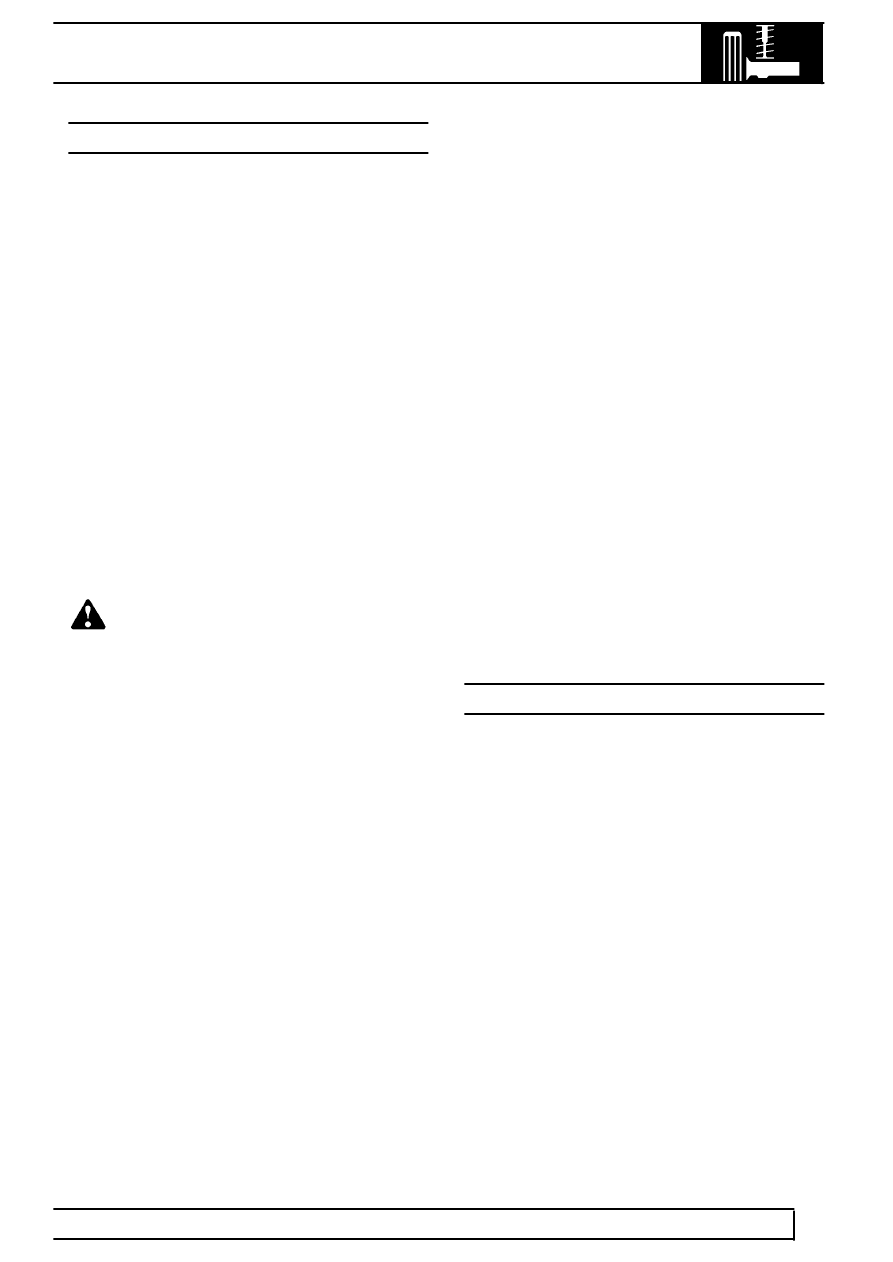Range Rover Classic

AIR SUSPENSION
1
FAULT DIAGNOSIS
DIAGNOSTICS AND FAULT RECOVERY
The ECU incorporates Fault Recovery Strategies to
minimise the effect of a system failure. A serial data
link is provided to allow diagnostic information to be
retrieved using TestBook. This is also used to set
height sensor datum when required.
Note that the serial link connector is coloured black for
identification purposes. Any faults stored in the ECU
memory, from the previous or current running period
will cause the ECU to flash the RAISE and LOWER
lamps for 30 secs. followed by continuous illumination.
If the ECU registers a system fault, it will store the
fault in the memory. The fault recovery programme
will operate the system depending on the nature of the
fault as follows:
Speed sensor fault - the ECU will place the system
in standard height and activate inhibit.
Height sensor fault - the ECU will place the system
in standard height and activate inhibit. Note that if
more than one height sensor fails, the ECU will deflate
the air springs to the bump stops.
WARNING: If any two failure occur the
system deflates and lowers vehicle to its
bump stops, it is possible to drive the
vehicle provided that great caution is exercised.
The vehicle ride will be extremely uncomfortable
and only low speeds will be possible. It is
essential that the vehicle fault is rectified as soon
as possible.
Pressure switch fault - the ECU will register
pressure switch failure if it detects that the
compressor has worked for a programmed time with
normal air spring operation possible. The ECU will
periodically operate the compressor as air is required.
The vehicle will be inhibited to standard.
Compressor fault - the ECU will register compressor
failure if it detects that the compressor has worked for
a programmed time with normal air spring operation
not possible. The ECU will attempt to place the
system in standard ride height, or a safe lowered
position (which could be system deflated). The system
will be inhibited from further ride height changes.
Air leaks - during normal operation the ECU
correlates the operating time of the compressor with
air usage. If compressor use is greater than
programmed, the ECU will register an air leak and
attempt to place the system in standard ride height, or
a safe lowered position (which could be system
deflated). The system will be inhibited from further ride
height changes.
Valve block fault - the control of each air spring is
monitored to determine that every valve is working
correctly.
1. If the ECU detects an air valve stuck open it will
attempt to adjust the vehicle to standard height
or a safe lowered position (which could be
system deflated). The system will be inhibited
from further ride height changes.
2. If an air valve is stuck closed above standard
height the ECU will deflate the other three air
springs.
3. If an air valve is stuck closed, at or below
standard height, the ECU will attempt to adjust
the other springs to the same height and activate
inhibit.
AIR SUSPENSION CIRCUIT DIAGRAM
See Electrical Trouble Shooting Manual.
